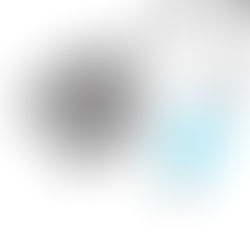DIFFUSE YOUR LIGHT, OR ELSE!
OK, that sounds a bit harsh. Then again, almost every (extreme) macro photographer knows this and tries very hard to put as much diffusion as possible. Just visit any Facebook group about macro photography or any forum, you will find talks of diffusion in abundance, there are all kind of setups to diffuse light, all kind of DIY and professional equipment, there are . . . So, yeah, we get it for sure, now go away! Cool, it is almost everybody gets it, but here I am going to present you an extreme example of what would happen if you do NOT diffuse your light!
What happens if you do not diffuse light in extreme macro photography? Now it seems everybody know the importance of diffusion and, admit it, we all have had fair shares of photos shot without or with less diffusion — ugly hotspots all over the image and the image just does not look good. But besides all of these, lets take a look from the other perspective, that is, what if we shoot with directional lights and maybe intentionally shooting a shiny smooth surface? Let’s see how it work out.
Here is a setup that I did to show you what happens if we use directional lights.

Two highly directional lights, A and B, with colimators on them. Objective is 20x Olympus MSPlan ULWD
In above setup, two highly directional lights, A and B are purposefully positioned so the lights reaching the subject are at different angles. The subject is a mineral rock that has crystal like object with shiny, smooth, highly reflective surface. The goal is to see what happens if only one light is turned on and when both are turned on. Here they are:

Light A is turned on

Light B is turned on
Now, lets take a look at these two pictures. In the first one with only light A is on, the crystal facet seems to be long and narrow and there seems to be only ONE crystal there. On the other hand, in the second picture with only light B is on, it seems there are not one but two crystals and the crystal found in the previous image seems a bit short and wide. Also worth mentioning is that the first image appear darker than the second one, this is because when light A is turned on (first image), less light are being reflected to the camera (via lens) because light A is higher up.
Now that is interesting, we are merely turning on and off lights and the images captured are very different. What is we turn on both lights? Here it is.

Both light A and B are turned on
Oh wow, when both lights are turned on, the above image seems to suggest we are getting a super imposition of the previous two images! Huh, right? No, I did not do any Photoshop on it, it is what the camera captured, no image manipulation. And worse yet, because the large crystal appears changing its geometry when only one light is on, the final image of it seems fuzzy and blurry.
So what happened? All we did was to turn on and off lights! Well the truth is, the shiny, smooth, reflective crystal facets are reflecting different light beams at different angle into the camera and thus forming different images when only one light is turned on. Why? Because both lights are highly directional and they shine light beams at different angle onto the facet of crystals!
So what happens if we add diffusion? Here is a setup with diffuser added.

An LED bulb shell is being added as diffuser.

Only light A is turned on, as before, it appears a bit darker because it is positioned at higher up angle.

Only light B is turned on and with diffuser
The first thing to notice is that in the first image when only light A is turned, the second smaller crystal appears, unlike without diffusion. The second thing and an important one is both images appear fuzzy and blurry over all, but both seem to have the same geometry.

Both lights are on and with diffuser
The geometry of crystals in the image with both lights on looks very similar to the geometries of crystals in images with only one light on, the only difference is light intensity.
There is one important thing, however, all images with diffusion appear fuzzy and blurry in over all appearance. What happened here? Well, you can think of that now there are thousands of tiny lights because of the diffusion and they all create an image of their own and then super imposed on each other, just like when both lights are on without diffusion. Well is this good? Aren’t we supposed to get a sharp image? The answer is YES, this is good. Why? Because if you notice that the in focus part of image with diffusion on do not change much in all three images shot with diffusion. This is where focus stacking comes in and combine multiple images into on sharp in focus image.
Now, lets have some fun with all these in a video. The first part of the following video shows what happens if we just move the light (without diffusion) around. Notice how geometry of the crystal changes as light moves. The second part of the video shows what happens when directional light is fixed, but camera moves. This part is important because during stacking, relative position of camera and light changes. The third part shows what happens when diffusion is added but light is moving.
Conclusion – having seen and analyzed what happens with directional lights, now we can understand and be sure that our motto of diffusion, diffusion and diffusion is important, not just for the sake of better looking image, but to capture true image of subject.





















